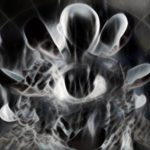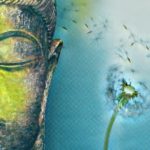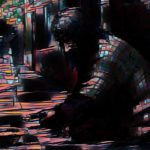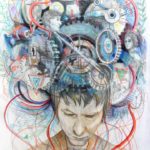Recent Comments
- Chodpa on The Place where the Primordial Speaks
- Chodpa on The Cuckoo of Presence
- Afzar on Bodhidharma’s teacher, Prajnatara
- Vajragoni on Audiobook is released
- Scott on Audiobook is released
-
Recent Posts
Categories
- A Darkness Visible
- A Docetic Assessment
- A Mystical Odyssey through the Sagathakam
- AI Creations
- Akṣayamatinirdeśasūtra
- Akṣhobhya’s Pure Land
- Ālaya-vijñāna
- Anūnatvāpūrṇatvanirdeśaparivarta
- Ariyapariyesanā Sutta
- Ascending the Noble Mountain of Primordial Perfection
- Asceticism
- Ashtavakra Gita in Light of the Unborn
- Audiobook
- Bankei Zen
- Beyond the Ascent
- Beyond the Rainbow Body
- Black Dragon Eye Mandala
- Bodhicitta
- Buddhadharma
- Buddhism’s Black Holes
- Buddhist Anecdotes
- Buddhist Hells
- Buddhist Meditations on the Tarot
- Chuang-Tzu
- Contemporary Musings
- Ḍākiṇī
- Dāsbodh
- Dharmakaya Abbey
- Dharmakaya Stick
- Divine Revelation
- Doctrine of the Void
- Dust Contemplation
- Ekacitta: Advanced Studies in Dark Zen
- Entry into the Dharmadhātu
- Eremitical Dhyani Meditations
- Exploring the Book of Revelation
- Gnostikos
- Hsin Hsin Ming
- Journey to the Center of the Mind
- Karma and Rebirth
- Korean Sŏn
- Kulayarāja Tantra—The Motherly Buddha
- Little Office of Our Lady of the Void
- LSD and Psychedelic Buddhism
- Māṇḍukya Kārikā
- Mañjuśrī Teaches Prajñāpāramitā
- Māra and Satan
- Meister Eckhart
- Mud and Water: Bassui Zen
- Mystagogia
- Nirvana
- Notes from the Iron Stupa
- Nothingness in Nāgārjuna and John of the Cross
- Obscure Religious Cults
- Preparation for the Afterlife
- Primordial Qigong
- Reflections on the Saṃdhinirmocana Sūtra
- Spirituality
- Springtime with Tozen
- Terma: A Mind Film by Vajragoni
- The Afterglow
- The Awakening of Faith
- The Bhagavad Gita
- The Book of Bodhi
- The Cloud of Unknowing in Light of the Unborn
- The Diamond Sutra
- The Divine Ātman
- The Divine Liturgy of Vajrasattva
- The Doctrine of Awakening
- The Dragon Mind of Zen Tarot
- The Elucidation of Consciousness
- The Experience of No-Self
- The Great Perfection of the Unborn Mind: A Book of Privy Counseling
- The Heart Sutra
- The Hermit's Den
- The Khaggavisāṇa Sutta: A Rhinoceros Horn
- The Lankavatara Sutra
- The Lankavatarian Book of the Dead
- The Lion's Roar of Queen Śrīmālā
- The Lotus Sutra
- The Mahāparinirvāṇasūtra
- The Naga Chronicles
- The Platform Sutra
- The Ratnagotravibhāgaśāstra
- The School of the Spirit
- The Secret Golden Light of the Unborn
- The Soul
- The Śūrańgama Sūtra
- The Sutra of Primordial Enlightenment
- The Tathāgatagarbhatārā Tantra
- The Udāna
- The Unborn Mind Mythos
- The Unborn Mind Sessions
- The Unborn Odyssey: A Novel
- The Vajrasamādhi Sutra
- The Vimalakirti Sutra
- The Yogasūtras of Patañjali
- The Zen Teaching of Bodhidharma
- The Zen Teaching of Instantaneous Awakening
- The Zen Teachings of Huang Po
- Theologia Mystica
- Tozen Teaching
- Tsung-mi: An Intimate Study
- Unborn I Ching
- Unborn Light Reiki
- Uncategorized
- Vasubandhu and the Absolute
- Wisdom from the Masters
- Wordsworth and Zen
- Yoga of the Manomayakāya
- Zen
- Zuowang
Archives
- October 2024
- August 2024
- February 2024
- January 2024
- December 2023
- November 2023
- October 2023
- September 2023
- August 2023
- July 2023
- June 2023
- May 2023
- April 2023
- March 2023
- February 2023
- January 2023
- December 2022
- November 2022
- October 2022
- September 2022
- August 2022
- May 2022
- April 2022
- March 2022
- February 2022
- January 2022
- December 2021
- November 2021
- October 2021
- September 2021
- August 2021
- May 2021
- April 2021
- March 2021
- February 2021
- January 2021
- December 2020
- November 2020
- October 2020
- September 2020
- August 2020
- May 2020
- April 2020
- March 2020
- February 2020
- January 2020
- December 2019
- November 2019
- October 2019
- September 2019
- August 2019
- June 2019
- February 2019
- January 2019
- December 2018
- October 2018
- August 2018
- April 2018
- March 2018
- February 2018
- January 2018
- December 2017
- November 2017
- October 2017
- September 2017
- August 2017
- May 2017
- April 2017
- March 2017
- February 2017
- January 2017
- December 2016
- November 2016
- October 2016
- September 2016
- August 2016
- July 2016
- May 2016
- April 2016
- March 2016
- February 2016
- January 2016
- December 2015
- November 2015
- October 2015
- September 2015
- August 2015
- July 2015
- June 2015
- May 2015
- April 2015
- March 2015
- February 2015
- January 2015
- December 2014
- November 2014
- October 2014
- September 2014
- August 2014
- May 2014
- April 2014
- March 2014
- February 2014
- January 2014
- December 2013
- November 2013
- October 2013
- September 2013
- August 2013
- May 2013
- April 2013
- March 2013
- February 2013
- January 2013
- December 2012
- November 2012
- October 2012
- September 2012
- August 2012
- May 2012
- April 2012
- March 2012
- February 2012
- January 2012
- December 2011
- November 2011
- October 2011
Meta
Category Archives: A Mystical Odyssey through the Sagathakam
The Passage to Spiritual-Sovereignty

- In self-realisation itself there are no time [-limits]; it goes beyond all the realms belonging to the various stages; transcending the measure of thought, it establishes itself as the result [of discipline in the realm] of no-appearance.
Self-realization: another dominant term that lies at the very heart of the Lanka—indeed, as Suzuki writes, its principle-thesis. This is also the principle reason why Bodhidharma handed over his copy of the Lanka to Huike, signifying the all-importance of awakening that inner-perception, the process wherein Mind awakens to the truth of ITs inner recesses and thus comes to the realization that all that is seen is seen of the Mind Itself. Suzuki develops this further within the context of the Lanka itself:
The Astounding Eighth Stage

- Mind (citta*) is the Alayavijnana, Manas is that which has reflection as its characteristic nature, it apprehends the various sense-fields, for which reason it is called a Vijnana.
Citta: citta principally means Mind. However, Suzuki breaks this down even more specifically and it is warranted that we note this:
Posted in A Mystical Odyssey through the Sagathakam
Tagged Akanishṭha, bhumi, citta, eighth stage, imagelessness, Maheśvara
Leave a comment
Mind Conventions

- [Cleary]: Illusion is not nonexistent; its existence is spoken of because it is of the same nature of things; unreal, like a flash of lightning, they are therefore noted as analogous to illusion.
You have to realize that for a Lankavatarian who adheres to the teachings of the Lanka, the visible-objective world, while a product of illusion, is not non-existent. It is what Tozen once described as a “concrete intellectual synthesis highly visible and touchable”. One can be assured of this if a Zen-Master were to suddenly slap you so hard that your teeth begin to rattle inside that noggin of yours! This concreteness though is still the stuff of Maya—synthesized matter. Breaking this matter down using a quantum-lens, it is a bundle of molecules swimming in a vast cosmic pool filled with particles of hyle. An advanced one, a Yogin who possesses exceptional siddhis powers can break-through the seeming solidness of the wall and can even become invisible at will, or even walk right through that apparently solid wall! Such a one is known as a Master [over] illusion—because once that wall is thoroughly broken down to that last hyle-particle, deceptive concrete existence is smothered with nothingness.
Seeds

- Things known as defiled or as pure are like hair-nets [that is, wrongly perceived by the dim-eyed]; they [really] have nothing to do with such notions as birth, abiding, and disappearance, or as eternity and non-eternity.
Hair-nets (keśoṇḍukam): a sling or knot of hair, such is the nature of the hair-net—in actuality little knots all tied together to form one whole. It’s a visual-distortion, such do the dim-witted perceive the apparent conceptions of birth, ect; all these phenomenal notions unravel (like knots of hair) in time betraying their impermanent nature.
A Matter of the Philosophers

- As long as those philosophers who get confused in their reasonings and who are unable to go beyond the realm of words, distinguish the discriminating from the discriminated – so long they do not see [the truth] of suchness.
A recurring motif throughout the Lanka concerns the Philosophers. Who are they? Are they members of a particular branch of philosophy, or are they part of a larger spectrum? Suzuki in one of his footnotes to his Studies in the Lanka asserts they are as follows:
Homelessness

65 & 66 [Cleary]: By proofs, paradigms of logic, and by proposition and reason, in terms of a dream, a castle in the air, a mirage, the moon and sun, I use such examples to say an origin is not objective. The imagined world is called a dream, confusion, or illusion, in the sense of being empty.
Ghosts in the Machine

- So the flood of the Alayavijnana is always stirred by the winds of objectivity (vishaya), and goes on dancing with the various Vijnana-waves.
Familiar phraseology of the dancing waves of the Vijnanas, stirred into motion through both objective (vishaya) and subjective instigators. The Alaya-receptacle itself is usually dormant, but it houses a million-fold [images] that are ready to spring into action at the least suggestion, in effect once again “haunting” its host. Memories, fears and phobias, sexual fantasies, times of love and betrayal, familiar moments in time that are always there but rarely relivable yet still sting with their indelible impressions on the psyche—all these are housed in that store-house consciousness and return again and again, like recurring Ghosts in the skhandhic machinery. How best to exorcise these old demons that forever linger on through entrenched habit-energy since time immemorial? Unborn Mind Zen is one such spiritual modality that provides the remedy. Disengage the Alaya by awakening its dominant twin—the Tathagata-garbha—that houses the Immaculate-Seed of the Bodhichild, a mystical child of Light that has no former associations nor obtuse attachments and thus can never be affected or haunted by the onslaught of its defiled-twin and harbinger of so much misery. Thus, having been graced with the full import of this Self-realization of Noble-Wisdom, this child of matured-garbha can enter into limitless deep-samadhis for the sake of its own spiritual development as well as leading others to drink from the deep and nurturing spring of the Unborn:
Posted in A Mystical Odyssey through the Sagathakam
Tagged ālayavijñāna), atoms, bodhichild, grasping, tathagata-garbha, tathata, vijnapti
Leave a comment
False Imagination

Andrew Gable
- What is known as multiplicity-seeds multiply in the mind (citta); in what is revealed, the ignorant imagine birth and are delighted with dualism.
Thought is derived from a multiplicity of seeds in the mind tinged with associative functions in the Alaya-receptacle. The ignorant-minded perceive birth smothered with dualistic ramifications. Perhaps the best simile for the dualistic mind-show is a character found in Edmond Spencer’s (c. 1552–1599), The Faerie Queene—Duessa. Duessa is the opposite of Una, who represents primordial unity:
As the Revulsion Turns

- The world is no more than thought-construction and there rages an ocean of views as regards ego and things (dharma); when the world is clearly perceived as such and there takes place a revulsion [in the mind] this [one] is my child who is devoted to the truth of perfect knowledge.
I remember writing way back during our Complete Lanka and Discussion (found in our library) forum that Suzuki had chosen a really horrible word (revulsion) for what we Lankavatarians know as the Great Turn-About, or the complete inner-oscillation within consciousness to remain prior to phenomena via the Recollective Resolve, or returning to the very vivifying Primordial-Source Itself. This Turn-About is also known as paravriti and is mentioned frequently in the Lanka. My favorite instance occurs in Chapter One wherein the Lord of Lanka suddenly experiences this and all it spiritually entails:
Posted in A Mystical Odyssey through the Sagathakam
Tagged fluids, Kronos, paravriti, Regeneration, revulsion, samsthana, turn-about
Leave a comment

